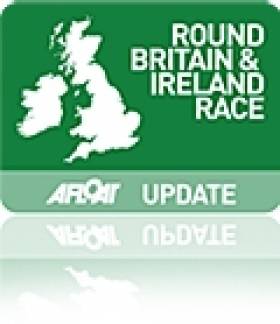Displaying items by tag: Artemis Ocean Racing,
High Speed Dash to Scotland
Hurtling along behind them is Groupama and they are pushing hard. If anything, the wind speed is due to increase during the night. The crews on board will be soaking wet and beginning to feel the effects of fatigue. Food will only be fuel and boat speed will be their primary concern.
To put this amazing 24 hour run into context, the two rocket ships are now north of Edinburgh, and could well be north of mainland Scotland by tomorrow morning!
Several hours behind the two front runners, Jonny Malbon and his crew on IMOCA 60, Artemis Ocean Racing, are reveling in the fast reaching conditions, (You can watch video, from on board, in the Competitor Blogs http://sevenstar.rorc.org/newsblogsphotos/competitor-blogs.html).
The overall leader on handicap is the RYA Keelboat Academy's TP52, John Merricks II. The average age of the team is under 24 and they have been training hard all season, as skipper Luke McCarthy explains; "It is a tough call to take on this course in a TP52, but this team has been working hard and should we have any problems we know how to fix just about anything. It is very wet, even down below, but we have made some modifications to the bulkheads, so that John Merricks II is a bit more user-friendly offshore."
After 24 hours, Piet Vroon's Ker 46, Tonnerre de Breskens, leads Class Zero. Tonnerre de Breskens loves heavy weather and is absolutely flying up the North Sea. They are now north of Vroon's homeland, Holland. Vroon claims that after a lifetime of racing, including 25 Fastnets as skipper, this race will be his swan-song. But after this incredible ride, he might just change his mind.
In IRC One, Philippe Falle's Reflex 38, Visit Malta Puma is first in class after 24 hours. Averaging over nine knots, the sailing school team is just north of Norwich, having covered 225 miles of the course. Astounding for a boat of only 38 feet.
However only a few miles astern are their team mates. Peter Robson skippering the First 40.7, Playing Around Logic is leading Class IRC Two after 24 hours - a great recovery after a drama at the start when a crew member had to climb the rig in very difficult conditions. They have been enjoying champagne surfing conditions, surfing at over 14 knots.
Tonight before the sun sets, the crews taking part in this challenging race will be using the last of the light to check lines and equipment on deck, before settling into their night watches. The wind is forecast to change to a more northwesterly direction, heading the fleet and the sea state may well become rough. It could well be a bumpy night in the Sevenstar Round Britain and Ireland Race.
The Sevenstar Round Britain and Ireland Race is being tracked with OCTrackers. Each boat is supplied with an OCTracker beacon, a self contained unit that transmits the position of the boat at regular intervals using GPS. You can watch the race as it unfolds by visiting: http://sevenstar.rorc.org/tracking.html
























































